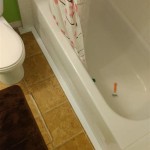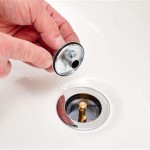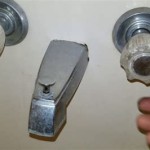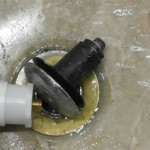Understanding the Four Season Bathtub Drain: A Comprehensive Guide
The bathtub drain, often overlooked, is a critical component of any bathroom. Its primary function is to effectively remove wastewater after bathing, preventing overflow and potential water damage. A well-functioning drain also contributes to hygiene by preventing the accumulation of stagnant water, which can harbor bacteria and unpleasant odors. The "Four Season Bathtub Drain" refers to a drain designed to perform optimally regardless of seasonal changes in water temperature and usage patterns. This article will delve into the intricacies of these drains, exploring their key features, benefits, installation considerations, and maintenance requirements.
The term "Four Season" implies a robustness and adaptation that contrasts with simpler drain designs that might be more susceptible to issues arising from temperature fluctuations. For instance, cheap rubber seals in older drains can degrade and crack more rapidly when exposed to frequent cycles of hot and cold water, leading to leaks. Similarly, the expansion and contraction of drain pipes in extreme weather can put stress on connections and potentially cause failures. The "Four Season" designation often suggests that the drain incorporates materials and design features specifically chosen to mitigate these risks and ensure long-term reliability.
Key Features of a "Four Season" Bathtub Drain
While the exact specifications can vary depending on the manufacturer and model, several features commonly distinguish a "Four Season" bathtub drain from standard drains. These features focus on durability, resistance to temperature extremes, and ease of maintenance. Understanding these characteristics can help consumers make informed decisions when selecting a new or replacement drain.
One crucial aspect is the material composition. "Four Season" drains often utilize high-quality materials known for their resistance to corrosion, temperature variations, and chemical degradation. Common materials include: *
Brass:
Offers excellent corrosion resistance and durability, making it a popular choice for drain bodies and stoppers. *Stainless Steel:
Provides exceptional strength and resistance to rust, often used in components exposed to significant wear and tear. *High-Density Polyethylene (HDPE) or other durable plastics:
Employed in drain pipes and overflow tubes, these materials are lightweight, resistant to chemical attack, and can withstand a wide range of temperatures. *Silicone Seals:
Silicone offers superior flexibility and resistance to temperature extremes compared to traditional rubber seals. It maintains its sealing properties even after prolonged exposure to hot water and chemical cleaners.The design of the internal mechanisms is another critical factor. A robust and well-engineered drain mechanism is less prone to failure due to wear and tear. Features such as a smoothly operating stopper mechanism, a well-designed overflow system, and easy access for cleaning contribute to the overall longevity and reliability of the drain. The overflow system is particularly important to prevent water damage in case of the bathtub being overfilled. A poorly designed overflow can be ineffective, allowing water to leak around the edge of the tub.
Finally, ease of installation and maintenance is a significant consideration. "Four Season" drains are often designed with user-friendliness in mind. This can include features such as standardized fittings, clear installation instructions, and easy-to-access components for cleaning and repair. A drain that is difficult to install or maintain is more likely to experience problems in the long run, even if it is constructed from high-quality materials.
Benefits of Choosing a "Four Season" Bathtub Drain
Investing in a "Four Season" bathtub drain offers several advantages over opting for cheaper, less durable alternatives. These benefits extend beyond simply preventing leaks and encompass aspects of convenience, cost-effectiveness, and peace of mind.
Longevity and Reduced Maintenance: The primary benefit is extended lifespan. The superior materials and robust design of a "Four Season" drain reduce the likelihood of premature failure. This translates to fewer repairs and replacements over the life of the bathtub, saving both time and money. Regular maintenance of any drain is essential, but a higher-quality drain is less prone to the need for frequent interventions. The initial investment in a more durable drain pays off in the long run by minimizing maintenance costs and avoiding the inconvenience of plumbing repairs.
Improved Leak Prevention: Leakage is a common problem with aging or poorly designed bathtub drains. Leaks can cause water damage to floors, walls, and ceilings, leading to costly repairs and potential mold growth. "Four Season" drains, with their high-quality seals and robust construction, are designed to minimize the risk of leaks. The use of flexible and durable materials like silicone in sealing components ensures a tight and reliable seal, even under varying temperature conditions. By preventing leaks, these drains protect the structural integrity of the bathroom and prevent potential health hazards associated with mold growth.
Enhanced Performance: A well-designed "Four Season" drain efficiently removes water from the bathtub, preventing the accumulation of stagnant water. This helps to maintain hygiene and prevent the development of unpleasant odors. The drain mechanism is designed to operate smoothly and reliably, ensuring that water is quickly and effectively drained. Moreover, the overflow system is designed to prevent water from overflowing the tub, further protecting the bathroom from water damage. Overall, a "Four Season" drain contributes to a more pleasant and hygienic bathing experience.
Installation Considerations for a "Four Season" Bathtub Drain
Proper installation is crucial for the optimal performance and longevity of any bathtub drain, including "Four Season" models. Although some homeowners may attempt DIY installation, it is generally recommended to hire a qualified plumber to ensure the job is done correctly. Improper installation can lead to leaks, drain blockages, and other problems that negate the benefits of a high-quality drain.
Preparing the Area: Before installing a new drain, the old drain must be removed. This typically involves disconnecting the drainpipe from the underside of the bathtub and unscrewing or prying out the old drain flange from the top. It's important to carefully clean the area around the drain opening to remove any debris or old sealant. The drainpipe should also be inspected for damage or blockages and repaired or replaced as necessary.
Proper Sealing: One of the most critical aspects of drain installation is ensuring a watertight seal between the drain flange and the bathtub. Plumber's putty or silicone sealant is typically used to create this seal. The sealant should be applied liberally to the underside of the drain flange and around the drain opening in the bathtub. The drain flange should then be carefully inserted into the drain opening and tightened securely. Excess sealant should be wiped away to create a clean and professional finish.
Connecting the Drainpipe: Once the drain flange is securely installed, the drainpipe can be connected to the underside of the bathtub. This typically involves using a slip joint or compression fitting to connect the drainpipe to the drain tailpiece. It's important to ensure that all connections are tight and leak-proof. After the installation is complete, it's recommended to test the drain by filling the bathtub with water and observing for any leaks around the drain flange or drainpipe connections. Any leaks should be promptly addressed to prevent water damage.
When choosing a "Four Season" bathtub drain, take careful measurements to ensure compatibility with your existing plumbing configuration. Different bathtubs may have different drain opening sizes and drainpipe configurations. Selecting a drain that is compatible with your specific bathtub will simplify the installation process and ensure a proper fit. Consult the manufacturer's specifications or consult with a plumber to determine the appropriate drain size and configuration for your bathtub.
In some cases, the existing drainpipe may need to be modified or replaced to accommodate the new drain. This may involve cutting, extending, or re-routing the drainpipe. It's important to ensure that any modifications to the drainpipe are done correctly and comply with local plumbing codes. A qualified plumber can provide expert advice and assistance with any necessary drainpipe modifications.

Bathtubs With A View Four Seasons
Four Seasons Plumbing And Drainage Ltd Bathrooms Bedford Checkatrade

Four Seasons Hotel New York Downtown Infinity Drain

Bathtubs With A View Four Seasons

Infinity Drain Offers Customized Drains In Trending New Specialty Finishes For Hospitality And Commercial Settings

Bathtubs With A View Four Seasons

Four Seasons Hotel Park Lane Wm Wetroom Materials

Full Marble Bathroom Looks Like A At The Four Seasons In Nyc Perhaps Hotel Wallpaper Design

Four Seasons Hotel Toronto Hotels Forbes Travel Guide Luxury Rooms Contemporary Bathroom Modern

Nice Bathtub Picture Of Four Seasons Jakarta Tripadvisor
Related Posts








